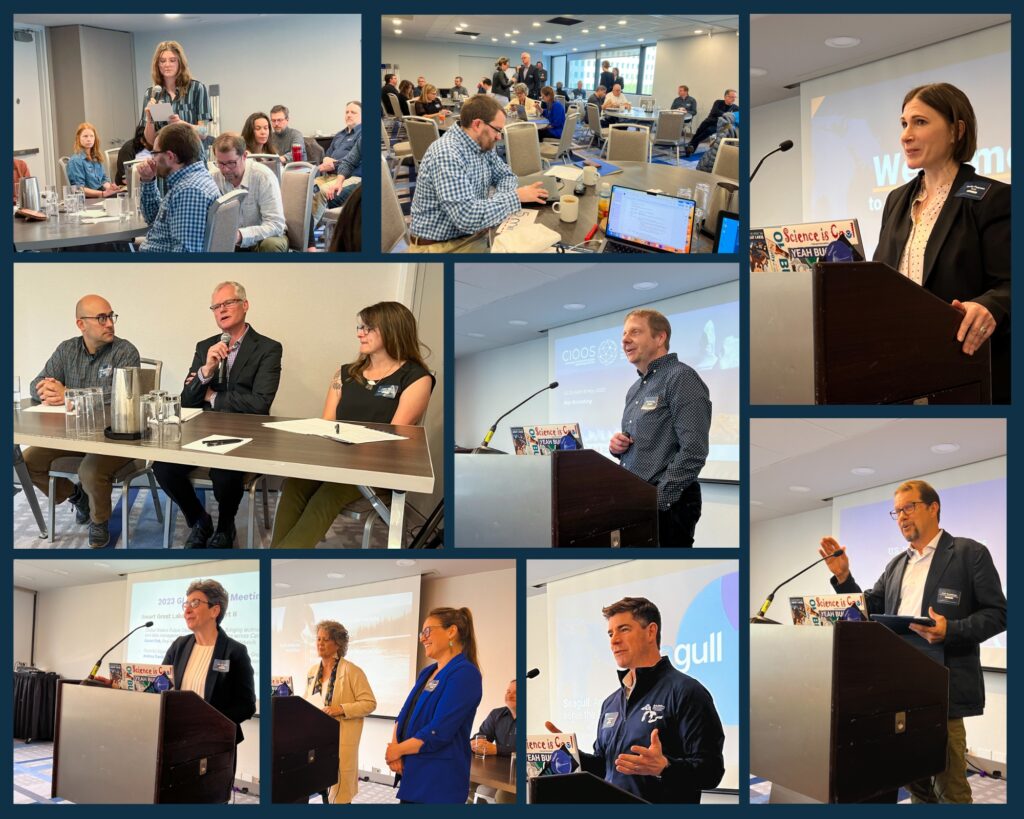Our May 8 Annual Meeting and Seagull Workshop gave our staff and board the chance to see many of you, our partners, live and in-person. Thank you for your attention, insights, and excitement for the future of GLOS.
Here are a few key takeaways:
- With an expanding set of partnerships on both sides of the border, GLOS is seen as an important player in regional planning around data sharing and management, including in planning documents like the International Joint Commission’s recent Great Lakes Science Strategy for the Next Decade.
- Smart Great Lakes efforts continue as GLOS works with initiative leadership and Trent University on projects contributing to common strategy goals
- From the Seagull Workshop breakout groups:
- How can we reach 1,000,000 Seagull users?
- Get into local communities.
- Identify and support those who would like to share Seagull with their networks, like with sending them QR code stickers or signs.
- Should we start a developer community?
- Maybe. It can be tough to find those interested regularly contributing.
- It may need to be organized around projects that benefit developers outside Seagull as well.
- How can we reach 1,000,000 Seagull users?
Then, right after the meetings, we attended, presented, and exhibited at the International Association for Great Lakes Research (IAGLR) Conference where we connected with even more of the research community, deepening our ties especially with those working on the Canadian side of the lakes.

Staff presented on:
Indigenous Partnerships with GLOS | Shelby Brunner, Observing Technology Manager
Smarter Lakes: Advances from Technology to Information Delivery | Shelby
Standards and cloud first platform for Laurentian Great Lakes Data – GLOS Seagull Past, Present, and Future | Joe Smith, Cyberinfrastructure Engineer
Lakebed 2030 Visualizing Process | Linden Brinks, Geospatial Analyst
Want to continue the conversation? Reach out to any of us.
